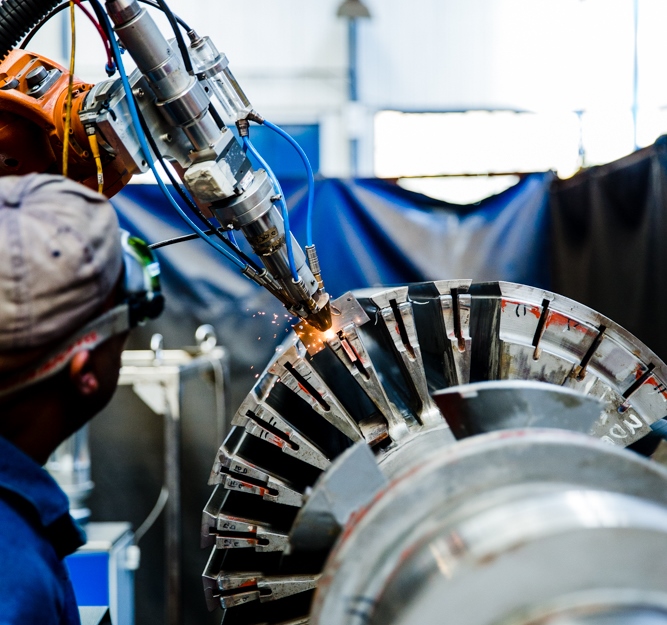CSIR and metalplus collaborate to provide laser-welding services for industry

The Council for Scientific and Industrial Research (CSIR), in collaboration with Actom’s Metalplus, will market and provide laser-welding services to industry over a period of two years. The CSIR, through its laser-based manufacturing capability, will provide expertise in laser cladding and hardening, while Atcom’s Metalplus will bring forth its machining and grinding capability.
The Council for Scientific and Industrial Research (CSIR), in collaboration with Actom’s Metalplus, will market and provide laser-welding services to industry over a period of two years.
The CSIR, through its laser-based manufacturing capability, will provide expertise in laser cladding and hardening, while Atcom’s Metalplus will bring forth its machining and grinding capability. This integrated turnkey solution is intended to drive the use of fibre laser-welding technology in component repair, where conventional methods cannot be used.
Since 1973, Metalplus has been pioneering micro-welding in South Africa and has prided itself in providing innovative solutions for industry players. In an effort to provide continued innovative and dynamic services, Metalplus now aims to diversify its offering through CSIR-supported laser technology.
“Currently, there is an untapped laser-based technology market in the mining, shipping, transportation and petro-chemical industry. Through this collaboration agreement, we not only want to develop the fibre laser welding technology market in these industries, but we also realise that we have a joint responsibility to introduce cost-effective solutions that will allow industry to operate smoothly and compete against advanced industry trends,” says CSIR National Laser Centre Commercialisation Manager, Hardus Greyling.
Laser welding technology is commonly used to repair components that have suffered surface damage or wear and improve the performance of components by changing their properties. Due to its low heat input and low dilution, it is also suitable for performing small-scale repairs and depositing fine layers of metal as weld overlays, which is beyond the scope of traditional welding systems.
A similar approach to this refurbishment welding technique was successfully applied on the Sasol generator repair project.
“A robotic laser metal deposition was used to restore the coil-retaining ring landing to original dimensions. This refurbishment welding process consisted of an edge weld around the contour of each section, followed by weld overlay of the inner area. Multiple layers were deposited to create a near net shape weld build-up,” says CSIR Senior Researcher and Certified International Welding Engineer, Corney Van Rooyen.
According to Van Rooyen, the Sasol coil-retaining ring, which usually holds the generator field coil end windings, could not be held in position. Due to the segmented design of the rotor, circumferential welding was not a feasible approach. Therefore, near-net shape weld build-up of the individual sections was required.
“The challenge with near-net shape build-up is that all the areas do not have the exact same dimensions and modification of the toolpath is required for every individual landing area. We therefore had to develop a generic structure within the native robot language to be able to modify the toolpath easily. This approach reduced the setup and programming time significantly,” added Van Rooyen.
The joint Sasol project shared by the CSIR and Metalplus was implemented successfully with the end-user benefitting from the laser metal deposition process, which is of exceptional quality because it has a low heat input and excellent repeatability. Furthermore, this approach reduced the total refurbishment time significantly.
Johannesburg-based Metalplus and the CSIR National Laser Centre have been collaborating for several years on an ad hoc basis by combining their respective capabilities to serve the mechanical repair market. In some instances, operating equipment deployed by clients of Metalplus has required repairs, which the CSIR National Laser Centre’s welding engineers and technicians do using laser-welding technology. Metalplus, on the other hand, has been assisting with machining services for both pre-preparation of components in needs of repair and final finishing of components upon completion of laser-welding repair work.
“We are quite confident that this partnership will yield positive results as both parties will be bringing a unique, yet valuable, component to the collaboration agreement. While the CSIR has agreed to provide laser services and expert knowledge to Metalplus in order to effectively respond to industry requests, Metalplus through their direct access to the market, will assist in growing and further developing a market for laser technology,” adds Greyling.


